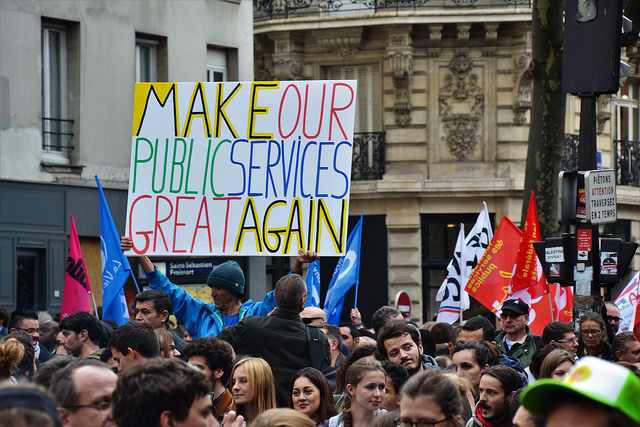President Macron, One Year Later
This past May 7th marked the first anniversary of Emmanuel Macron’s arrival in the Élysée Palace, heralding a change in the country. Young, pro-European and distanced from the old French parties, he prevailed in the second electoral round with a message “neither right nor left” over the right-wing candidate Marie Le Pen, winning a decisive 66% of the votes. But his victory was not only based on France’s newfound Europeanism in the light of the rise of the far‑right movements in Europe. The youngest President in France’s history arrived in the office with the goal of cutting down regulation and curtailing the role of the state in the economy. His electoral platform featured a number of ambitious (if occasionally controversial) reforms, such as the introduction of a 35 hours workday, tax cuts for corporations and great fortunes, and reduction of unemployment to 7%.
During his first year in the office, Macron pushed through three important fiscal reforms. In January, he began the process of gradual reduction of the corporate income tax from 33.3% down to 25%. In 2018, corporate profits will be taxed at 28% for the initial EUR 500,000 and at 33% for the excess, while in 2019 – at 31% for the excess. In 2020, a flat rate of 28% will be introduced, which will be replaced with 26.5% in 2021 and with 25% in 2022. Moreover, Macron replaced the progressive tax rates (running up to 45%) for capital income with a flat rate of 30%. Finally, he replaced the wealth tax (ISF) with the real estate tax (IFI), resulting in an effective 70% reduction of this contribution. While some of these reforms have been criticized on the grounds of favoring the rich and perpetuating economic inequalities, they have in fact removed excessive burdens to investment and saving.

Photo: Street protest against President Emmanuel Macron’s overhaul of a labor code. Paris, October 2017.
Jeanne Menjoulet, Flickr, Attribution 2.0 Generic (CC BY 2.0)

